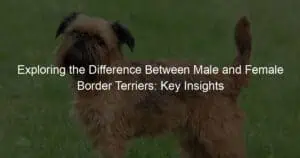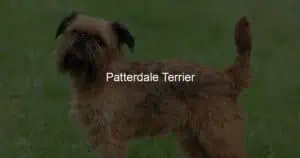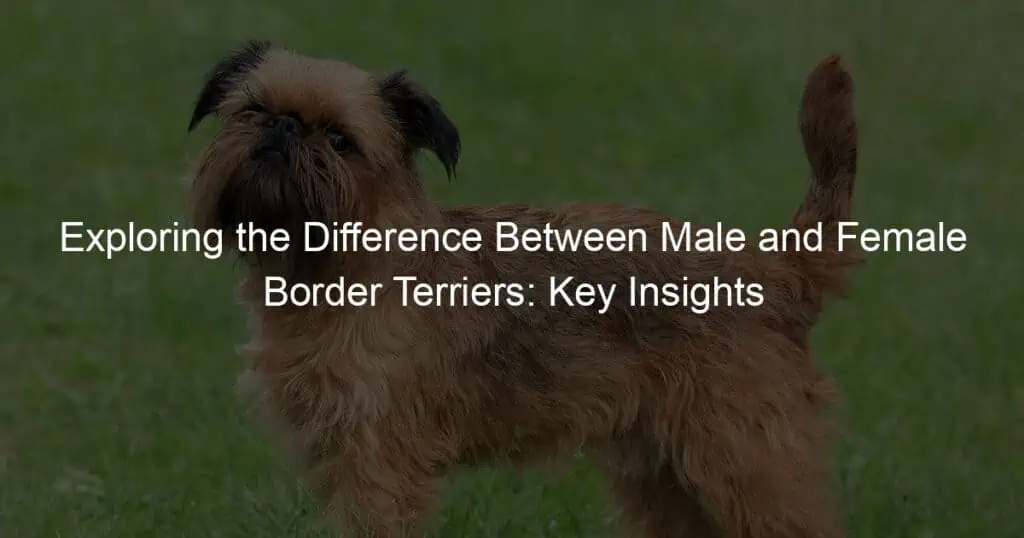Passionate debates are common in the canine world, especially when it comes to questions of safety and health for our beloved pups. Few topics evoke as much discussion amongst Border Terrier owners as whether to dock their terrier’s tail or not. Docking refers to cutting off a puppy’s tail in order to give it the iconic, short look that is associated with this breed.
For many people, docking goes against an internal moral code and violates an animal’s right to personal autonomy whereas others argue that perhaps history has been unfair to the practice…and there may be benefits from docking after all! Continue reading if you want more information on why dog enthusiasts hold such differing opinions about this issue.
Advantages and disadvantages of tail docking
Tail docking has been practiced for hundreds of years and is still used today. It involves the surgical removal of a portion of the tail to prevent injuries and potential infections. While there are potential health benefits from tail docking, it can also be harmful to both animals and adoptive owners.
Positively, tails may be docked in order to prevent and protect a breed from suffering from accidental injuries, such as those caused by working in thick grain or debris, tying ropes, etc. However, it involves a significant amount of pain for the animal and can lead to increased stress levels- not to mention cosmetic issues such as scarring or bone infection.
With this in mind, many organizations have begun to question the necessity of tail docking altogether and wish for an end to the practice- leaving owners with no other choice but to weigh out any advantages against the numerous risks that come hand in hand with this procedure.
Do border terriers get their tails docked?
Border terriers are well-known for their merry and spirited personalities, making them a popular choice among pet owners. However, many people don’t know that these dogs traditionally have their tails docked. The docked tail is believed to help the dog swim more efficiently in the water and protect it from injury while hunting.
It has been a practice seen among this breed of terrier since they were first bred in the 1700s. People who decide to get a border terrier may have difficulty finding an ethical breeder who chooses not to dock the tail on puppies.
What age is too late to dock a tail?
The age at which it is appropriate to dock a canine’s tail has been heavily debated in recent years. Generally, it is accepted that the procedure should be done very young, usually before two weeks old, to minimize risks and ensure optimum health benefits. However, if the puppy is already older than this when the decision to dock its tail is made, there are still options available.
In these cases, the procedure must be performed by a professional veterinarian with anesthesia for pain control – which can increase the risk due to the added stress of general anesthesia on such a young puppy’s developing body. While there are rare circumstances where it may be beneficial or necessary to dock an older puppy’s tail, ultimately it should be avoided unless absolutely essential.
Are there any benefits to tail docking?
In recent years, a controversial debate has emerged about whether or not tail docking is beneficial. Proponents state that the procedure prevents injuries and infections to dogs’ tails, while opponents say it causes unnecessary suffering and should be banned.
While there may be arguments both for and against tail docking, there are a few medical conditions where the practice has proven to have health benefits. Tail docking can be recommended as a preventative measure for long-tailed breeds if there is a concern of infections due to accumulated dirt, mud, or parasites found in their tails.
Some breeds of dogs may benefit from tail docking as an extra precaution to avoid potential problems related to their anatomy or gait. Research suggests that certain herding and working dogs that routinely jump over obstacles can gain an advantage by taking some weight off their tails and improving agility, balance, and performance. Although further research into the benefits of tail docking is necessary, these findings suggest that it could provide positive advantages in the care of some specific animals.
Why is tail docking controversial?
Tail docking has become a highly controversial topic among pet owners, veterinarians, and animal rights activists in recent years. The practice refers to the procedure of cutting off a portion of the tail from certain types of dogs, with many advocates claiming it is for the safety of the animal due to its inability to naturally defend itself against tail injuries.
On the other hand, those who are opposed argue that this invasive procedure offers little to no benefits as most serious tail injuries are caused by cars or interactions with other animals and not by activities such as running and playing. Furthermore, they claim that docking can lead to physical discomfort, reduce the ability of a dog to communicate through body language, and causes psychological trauma.
Ultimately, there is now an ongoing debate over whether tail docking should be banned or remain allowed under regulation.
Wrapping Up
Ultimately, the decision to dock a Border Terrier’s tail should be left up to the owner. Although there are pros and cons to this procedure, no one can deny that it is a difficult decision and must ultimately be done out of respect for the dog’s best interest.
If someone chooses not to dock their pet’s tail, they should make sure they groom them regularly and brush their hair, as longer tails tend to become tangled and matted more quickly.
Furthermore, if an owner opts to have their pup’s tail docked, then they should make sure they do so in an environment where professionals oversee the process and the pup can receive proper aftercare. No matter which option you choose, owning a Border Terrier is still rewarding and enjoyable – just find what’s right for you and your pup!
















